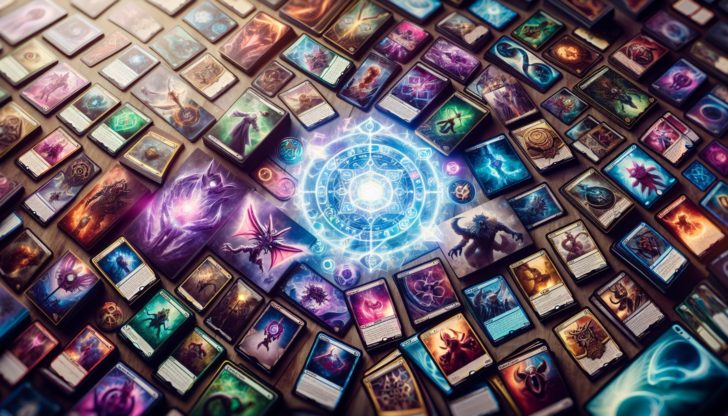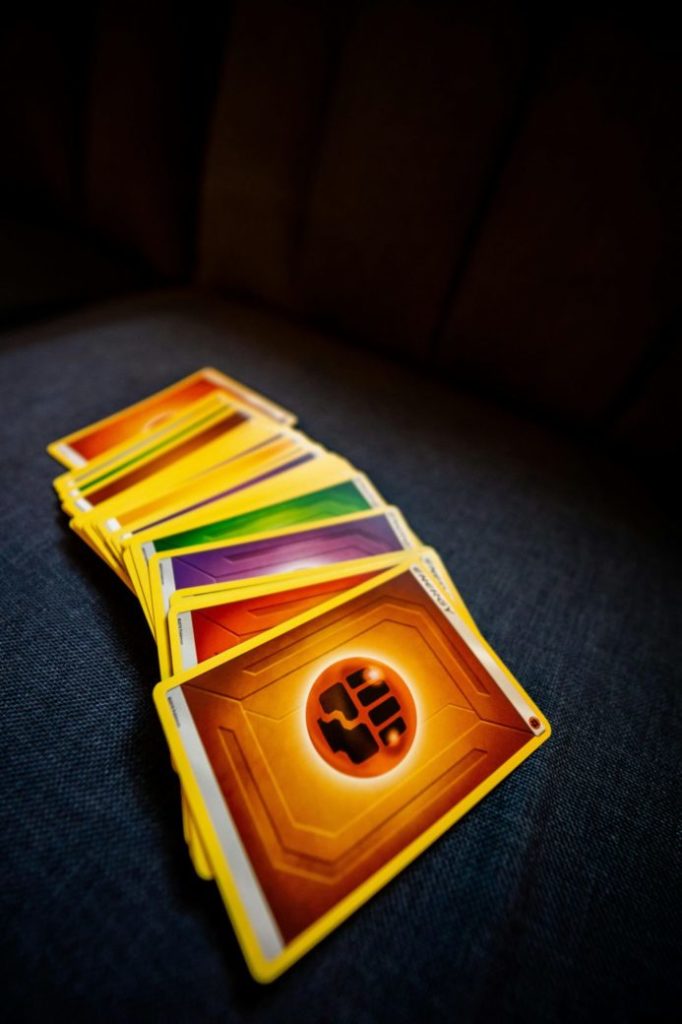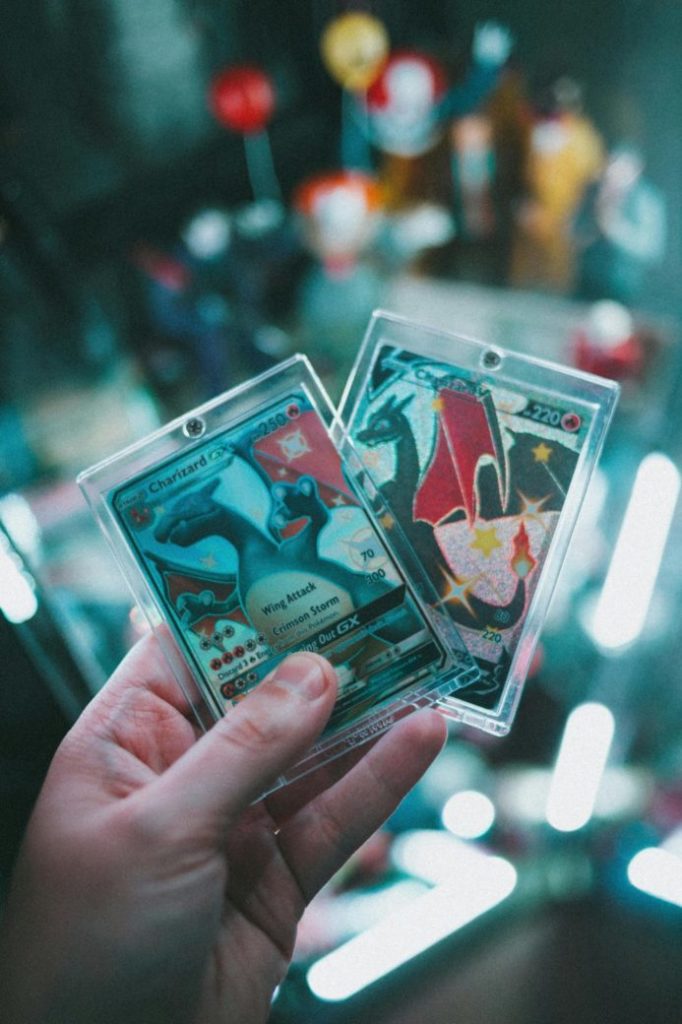Exploring the top card trading games of 2024? This article highlights the must-play games that are enchanting players worldwide. Forget fluff; we’re here to guide you through the dynamic world of card trading games, offering insights into the unique experiences they bring to the table. Whether you’re starting a collection or looking to refresh your deck, find your next favorite game right here.
Table of Contents
Key Takeaways
Trading card games (TCGs) combine the thrill of collecting with strategic gameplay, and the market is booming with a forecasted growth to USD 34615.8 million by 2031.
Magic: The Gathering remains a timeless classic, constantly refreshing its content, while games like Yu-Gi-Oh! and Pokémon TCG continue to innovate with new card types and engage players both old and new.
TCGs build robust communities through social interaction and shared interests, with local game stores and digital platforms enabling global connectivity and organized play.
The Evolution of Card Trading Games

Collectible card games have established a unique place in the gaming industry. It all started in 1993 when Magic: The Gathering marked the dawn of a new genre – the collectible card game. Early players began their journey with pre-made decks and expanded their collection through randomized booster packs and trading. A dramatic shift in the landscape of CCGs occurred in 1997 when Wizards of the Coast, the creators of Magic: The Gathering, acquired TSR and the Legend of the Five Rings CCG.
The CCG genre, known for its diverse range of ccg games, experienced an explosive growth spurt in 1996 with the addition of new titles like:
BattleTech
The X-Files
Mythos
Netrunner
The main hook was the strategic gameplay – players were tasked to outmaneuver their opponents by building decks that leveraged synergistic card combinations.
Fast forward to 2022, and the trading card game market size hit an impressive USD 14555.3 million, with a forecasted growth to USD 34615.8 million by 2031.
The Origins of Collecting and Playing Cards
Card collecting and playing were not new concepts when the first CCGs emerged. In fact, they have a rich history dating back to the early 20th century. The Base Ball Card Game from 1904 is a notable precursor to collectible card games. It was collectible and sold in randomized packs, laying the groundwork for the CCGs we know today. However, it lacked one essential element – strategic gameplay.
Enter Magic: The Gathering – the first official collectible card game that successfully married the thrill of collecting cards with the strategy of gameplay. Invented by Richard Garfield, Magic: The Gathering created a whole new genre that took the world by storm. Collecting and playing cards were no longer just about the cards themselves. It became a strategic endeavor, a mind game, a battle of wits.
Breakthrough of Magic: The Gathering
The breakthrough of Magic: The Gathering was a game-changer in every sense of the word. Invented by Richard Garfield, Magic: The Gathering was nothing short of revolutionary. It was so unique and innovative that Wizards of the Coast received a patent in 1997, acknowledging its unique method of gameplay with trading cards. The gameplay was not just about collecting cards; it was about using those cards strategically to outmaneuver your opponent.
Magic: The Gathering was not just a one-time wonder. It was built to last. Since its inception, Magic: The Gathering has expanded to include over 22,000 unique cards. Each new card added a new layer of complexity and strategy to the game, keeping players engaged and always on their toes. It was a game that continued to evolve and grow, cementing its place in the world of collectible card games.
The Surge of New CCGs
The success of Magic: The Gathering opened the floodgates for an influx of new collectible card games. The new millennium, in particular, saw a significant increase in CCGs that harnessed popular intellectual properties to draw in a broader audience. But it wasn’t just about leveraging popular culture. CCGs began to innovate, with some games, such as Shalom – The Ending of Wars CCG, incorporating educational elements into their themes.
These educational components fostered community engagement by stimulating discussion and offering new learning experiences. The shift towards educational themes represented a new direction for CCGs, a direction that promised to make the genre even more diverse and engaging.
The Mechanics Behind Trading Card Games

Having traced the evolution of trading card games, we now turn our attention to the mechanics that propel these games. Many trading card games incorporate a resource system where specific cards serve as the means to perform gameplay actions, controlling the game’s pace and contributing to its strategic complexity. Take Magic: The Gathering, for instance. Here, players strategize using cards as their spellbook to:
summon creatures
cast spells
activate abilities
achieve the objective of reducing their opponent’s life total to zero
The games are designed to be fast-paced, avoid top-deck stalemates, and focus on reducing the opponent’s life total.
Other games, such as Star Wars Unlimited, offer:
An interactive turn structure, allowing players to alternate actions, resulting in a more dynamic and engaging gameplay experience
Cards, categorized into specific types like units, upgrades, and events, that carry unique rules and effects that shape gameplay decisions and strategies
Strategic deckbuilding, which is essential, particularly in games featuring multiple battlefronts like in Star Wars Unlimited’s two-arena system, where players must manage space and land battles effectively.
Resource Systems and Strategic Gameplay
Resource systems are a key component of strategic gameplay in trading card games. Card strength in trading card games is often balanced by resource requirements for their play, influencing strategic deck construction and the pace of the game. For instance, during the setup phase in Star Wars Unlimited, players begin with an initial hand of cards from which they select resources, influencing their capabilities from the game’s onset.
Star Wars Unlimited’s resource system offers several advantages:
Any card can be played as a resource, eliminating hindrances like color screws and mana screws
Continuous gameplay is promoted, allowing for strategic depth
The regroup phase and Leader system enhance the strategic depth, with resource management dictating deck composition and battles.
Deck Customization and Tournament Decks
Another intriguing element of trading card games lies in deck customization, a feature that makes them a popular choice for customizable card game enthusiasts. It allows players to select cards from their collection to construct decks based on strategy and the game’s rules. Some games, like Keyforge, shake things up by offering a one-of-a-kind experience with decks that are randomly generated by an algorithm, each with a unique construction and name, deviating from the traditional deck customization norm.
Personalizing a deck enables players to express their strategies and preferences, making each game a tailored and dynamic experience. In competitive play, a well-designed tournament deck showcases a player’s skill and strategic acumen, often being a key factor in success.
Popular Trading Card Games of the Year
Which card trading games have captured players’ interest in 2024? The list includes:
Pokémon TCG
Magic: The Gathering
Yu-Gi-Oh!
TCG
Flesh and Blood
Weiß Schwarz
MetaZoo
Cardfight!
Vanguard
Each game has its own unique mechanics and fan base. Among these, Yu-Gi-Oh! and Pokémon are not just among the most played TCGs but have also achieved significant sales, with billions of cards sold.
Disney Lorcana has also emerged as a significant entry point for beginners to TCGs in 2024, boasting straightforward rules and wide accessibility. Meanwhile, games like Flesh and Blood and One Piece Card Game have attracted players with their unique gameplay. Flesh and Blood offers single hero focus, a recycling card system, and fast-paced ‘chain’ combat, while One Piece Card Game entices players with simple yet strategic play, Don! Cards, and beautifully themed art and card variants.
Magic: The Gathering – A Timeless Classic
Magic: The Gathering stands as a timeless classic among trading card games. It achieved remarkable popularity, with over 1 billion cards sold by the end of 1994, exemplifying its initial and sustained market presence. The game’s dynamism is maintained through the continual release of fresh content that keeps players engaged.
For instance, ‘Modern Horizons 3’ is an example of how Magic: The Gathering appeals to its audience by introducing exciting new cards alongside classic reprints. The consistent introduction of new gameplay elements paired with community events helps explain why Magic: The Gathering remains a timeless classic.
Yu-Gi-Oh! – The Game of Kings
Yu-Gi-Oh! stands tall in the world of trading card games, earning the title of ‘The Game of Kings’. With the Yu-Gi-Oh! World Championship 2024 scheduled to take place in the United States, the game continues to thrive. In fact, 2024 marks the 25th anniversary of the Yu-Gi-Oh! Card Game, a testament to its enduring popularity.
Konami, the game’s developer, has been actively promoting the game, hosting the 250th Yu-Gi-Oh! Championship Series (YCS) event in North America and Latin America. New booster packs like Light of Destruction, The Infinite Forbidden, and Legacy of Destruction have been introduced, along with special products like the Yugi & Kaiba Quarter Century Card Case to commemorate the game’s anniversary.
Pokémon TCG – Catching Them All in Card Form
From being a favorite childhood TV show to becoming a highly popular trading card game, Pokémon TCG has captured the hearts of many. The game has constantly evolved, releasing various new Pokémon types such as:
Ex
GX
V
VSTAR
VMAX
These new Pokémon card types entice collectors with their novelty and attract younger audiences eager to explore the latest additions.
The continual innovation with new Pokémon types and characters is a key factor behind the enduring popularity of Pokémon TCG. Whether it’s the thrill of collecting, the strategic gameplay, or the nostalgia of beloved Pokémon characters, Pokémon TCG continues to enchant players by consistently introducing fresh elements to the game.
The Rise of Licensed Trading Card Games

Recent years have witnessed a surge in licensed trading card games. These games, which are based on well-known franchises, allow fans to engage with their favorite stories and characters in a whole new way. Some examples include:
Disney Lorcana, which immerses players in the Disney universe, acting as ‘Illumineers’ using Ink to summon Disney characters, aiming to accumulate 20 Lore points represented by Diamond symbols to win.
Marvel Champions, where players take on the roles of iconic Marvel heroes, battling against villains and completing missions.
Pokémon Trading Card Game, which allows players to collect and battle with Pokémon cards, just like in the popular video game series.
These licensed trading card games, including fantasy flight games, offer fans a unique and interactive way to connect with their favorite franchises.
Whether it’s the intricate gameplay or the thematic coherence between the card’s function and the subject it represents, licensed trading card games have become increasingly popular. Let’s take a closer look at two of these games with a star wars license: Star Wars Unlimited and UniVersus.
Star Wars Unlimited – The Force in Card Battles
Star Wars Unlimited is a recent addition to popular TCGs, featuring the Spark of Rebellion starter set. The game’s thematic connection to the Star Wars universe is evident in its card design, with subtle mechanics reflecting character relationships and storylines.
The game makes clever compromises between theme and gameplay to ensure an immersive experience that remains streamlined and accessible. Whether you’re a Star Wars fan or a seasoned card game enthusiast, Star Wars Unlimited offers a unique and engaging experience that’s sure to keep you hooked.
UniVersus – The Multiverse of Card Gaming
UniVersus, on the other hand, takes a different approach. It integrates multiple franchises into a compatible gaming environment. This integration allows players to engage with a variety of universes within the same game system, enabling characters and elements from diverse franchises, such as My Hero Academia and Star Trek, to be combined in a single, coherent gameplay experience.
Whether it’s a showdown between superheroes or a strategic battle in the Star Trek universe, UniVersus offers a unique card gaming experience that transcends the boundaries of traditional card games.
Building a Community Around Card Trading Games
Trading card games extend beyond mere cards or gameplay; they encompass the community. Social interactions, nostalgia, and shared interests foster a sense of community among players. Trading card games provide platforms for forming friendships and experiencing a sense of belonging, which can be beneficial for mental health.
Meetups, conventions, and online forums are key venues where players can develop social connections, contributing to a larger sense of community. The secondary marketplace for trading card games also plays a pivotal role in the community’s development by facilitating the exchange of individual cards among players.
Local Game Stores and Tournaments
Local game stores serve as social hubs for trading card game enthusiasts, providing a place to:
Meet
Play
Partake in events
Trade cards
This creates a strong community atmosphere. Tournaments at local game stores play a critical role in fostering a competitive environment for players, exemplified by events such as Pro Tour Thunder Junction that highlight player expertise in Magic: The Gathering.
The social aspect of trading card games is amplified by the in-person interaction and sense of shared interest promoted by local game stores and their organized events. Whether it’s a friendly game or a high-stakes tournament, local game stores provide the perfect setting for players to connect and engage.
Online Platforms and Global Connectivity
In today’s digital age, online platforms have enhanced the accessibility of trading card games to players worldwide. They enable players to connect and compete with each other on a global scale, fostering the creation of international communities that transcend geographical boundaries.
Platforms such as MTG Arena and Magic Online support diverse playstyles and formats, including both digital and traditional tabletop gameplay. Whether you’re a casual player or a competitive gamer, these platforms provide a space for everyone to enjoy their favorite card games and connect with like-minded individuals across the globe.
How to Start Your Trading Card Game Collection
Embarking on your own trading card game collection can be a thrilling journey. It’s not just about collecting cards; it’s about embarking on a journey of strategic gameplay, community engagement, and lifelong learning.
Organizing your collection early on is paramount to prevent it from becoming an overwhelming task as it expands.
Choosing Your First Game
The selection of your initial trading card game constitutes a crucial decision. You’ll want to select a game that aligns with your personal interests and gameplay experience to ensure long-term engagement. If you’re interested in a fantasy theme and manageable complexity, the Lord of the Rings themed Magic: The Gathering starter kit is a highly recommended option.
The Pokemon Battle Academy is also a great starting point, especially for younger audiences or fans of the Pokémon franchise.
Managing Your Collection
Once your game of choice to play cards is clear, the next step is to manage your collection. Use rigid top loaders for the most valuable cards to protect against bending and warping. Store your cards in clear plastic bins instead of cardboard boxes to protect against water damage and to easily identify stored cards.
Storing cards in a dark, dry place protects them from UV rays which can fade colors and moisture that can cause warping and mold.
Learn more, visit Launching Success: How to Start a Trading Card Business.
Summary
As we’ve explored, the world of trading card games is rich and diverse, offering something for everyone. From the strategic gameplay to the sense of community, trading card games offer a unique blend of entertainment, challenge, and social interaction. Whether you’re a seasoned player or a newcomer, there’s always something new to discover and enjoy in the world of card trading games.
So, are you ready to embark on your own trading card game adventure? Whether it’s Magic: The Gathering, Yu-Gi-Oh!, Pokémon TCG, or one of the many other games available, there’s a whole universe waiting for you to explore. So, gather your deck, strategize your moves, and step into the exciting world of trading card games. The game is on!
Frequently Asked Questions
What was the first official collectible card game?
The first official collectible card game was Magic: The Gathering, which was released in 1993.
What are some of the popular trading card games in 2024?
In 2024, some of the popular trading card games are Pokémon TCG, Magic: The Gathering, Yu-Gi-Oh! TCG, Flesh and Blood, Weiß Schwarz, MetaZoo, and Cardfight! Vanguard. Enjoy your trading card adventures!
How do I choose my first trading card game?
Choose a trading card game that aligns with your personal interests and gameplay experience to ensure long-term engagement. Consider games with manageable complexity or themes that you enjoy. Good luck!
How can I protect and store my trading card collection?
To protect and store your trading card collection, use rigid top loaders for valuable cards, store them in clear plastic bins, and keep them in a dark, dry place to avoid damage from UV rays and moisture.
How do online platforms enhance the trading card game experience?
Online platforms enhance the trading card game experience by increasing accessibility for players worldwide and fostering international communities that transcend geographical boundaries. This creates the opportunity for players to connect and compete on a global scale.









